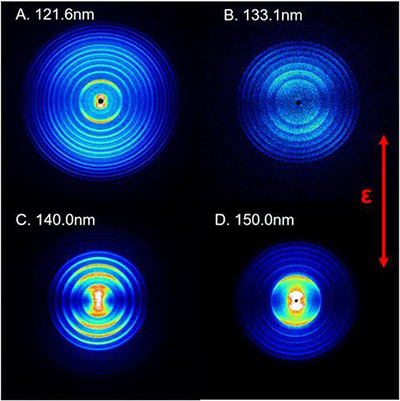A sudden increase in Earth's atmospheric oxygen content occurred around 2.4 billion years ago and is known as the great oxidation event, but its origin remains an open question. Now, researchers in China have confirmed that the vacuum ultraviolet (UV) dissociation of sulfur dioxide into molecular oxygen and a sulfur atom was probably an important contributor.

The team examined sulfur dioxide photolysis at various wavelengths using time-sliced velocity-map imaging (Image by YUAN Kaijun)
Until now, breakdown of CO2 was widely considered the abiotic source of oxygen in our early atmosphere. However, volcanic eruptions that took place before the great oxidation event, in a period known as the Archean eon, produced large amounts of gaseous sulfur dioxide. Although its role as an oxygen source has been studied before, its importance in relation to our current atmosphere was unclear. Kaijun Yuan and his team have now explored this source further by taking advantage of the intense vacuum ultraviolet free electron laser at the Dalian Coherent Light Source in China, a unique tool capable of determining the dissociation pathway of molecules.
"Most challenging is the detection of the S(1D) + O2 channel across the entire vacuum UV range, which was not achieved before," explains Yuan. "The experiments in this work applied two independently tuneable vacuum UV laser radiation, achieving vacuum UV photolysis and vacuum UV detection, which provided high detection sensitivity and high resolution." This allowed the team to determine the quantum yield of the S + O2 dissociation channel, enabling them to estimate that around 4.3% of present-day atmospheric oxygen comes from volcanic sulfur dioxide.
David Osborn, an expert in atmospheric chemistry from Sandia National Laboratories in the US, says the study provides "solid evidence" that sulfur diocide breaks apart with a 30% yield. However, Osborn warns that its proposed impact on our current atmosphere "seems quite speculative." Whereas Yuan says his team's calculations are likely an underestimate, as sulfur dioxide emissions and the UV flux were both higher in the late Archaean compared to the modern-day values used in their approximations. Incorporating the sulfur dioxide source into complex models of Earth's early atmosphere will be crucial to verify their results.